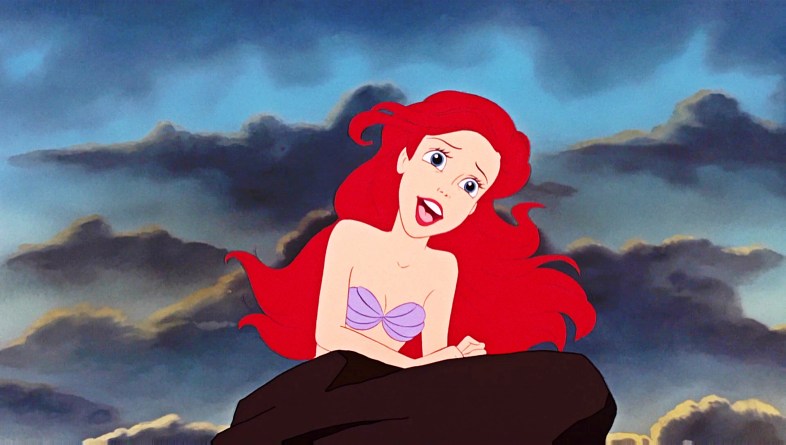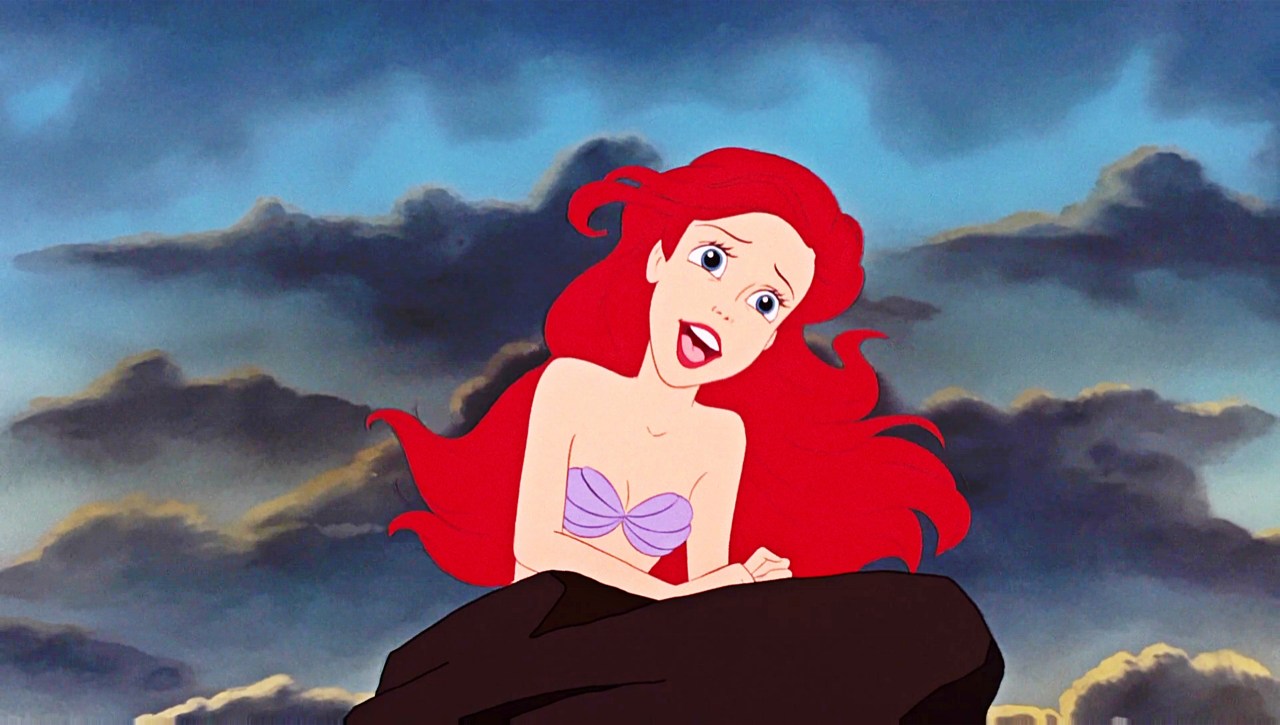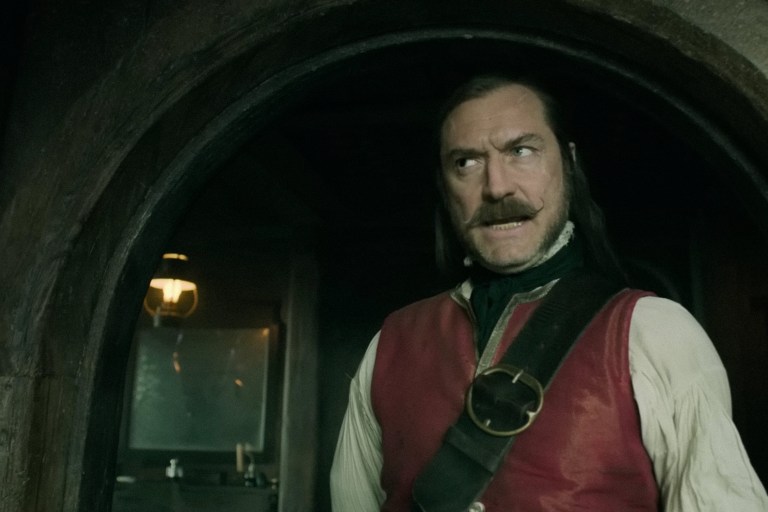Disney Sucks, But We’re Also Hypocrites
Why? Why do so many of us wait for “our turn,” for someone to come to us and sweep us off our feet?

In chatting with women over the years I’ve noticed an interesting trend — all of us have felt at some point that there was a “wall” around us that someone else needed to climb in order to win our loyalty and affections. Why? Why do so many of us wait for “our turn,” for someone to come to us and sweep us off our feet? No doubt it has something to do with the classic tales of “Rapunzel” and “Sleeping Beauty” we all heard growing up than mere coincidence.
Among men who have shared their stories with me, I’ve observed a desire to be a hero in the form of provider and protector. When they fall short, their environment provides no opportunities to fulfill this role, or the mission seems futile, they retreat into their caves.
To avoid feeling vulnerable, women put up invisible walls while men become invisible.
Again these trends probably have more to do with the persistent themes and formulas in movies, TV shows and magazines that we consume from our pre-school years into adulthood than by chance.
For decades superheroes and ninjas have been the dominant themes in boy’s media while princesses and magical abilities have been the dominant themes in girl’s media.
One of the problems with girl’s television shows and movies, which often focus on the privileges that come with tiaras (“Sophia the First”), using one’s magical abilities (“Wishenpoof”) and acquiring the latest fashions (“Barbie Life in the Dreamhouse”), is that they teach girls absolutely nothing about the importance of developing a skill, serving the greater good, or the effort or trade-offs that come with the pursuit of success. They teach girls to be entitled, rather than find purpose.
Indeed, one reason why nearly all the main female characters in popular girl’s shows have magical possessions or magical abilities that make them special may be to avoid confrontation with any uncomfortable possibilities that might accompany hard-earned accomplishments, such as the loss of femininity, risking injury or death, or having to compromise and co-operate with others.
As girl’s media transitions from the rating G to PG-13, magical abilities seem to transition into “Magic Hoo Hoo,” a term coined by writers Sarah Wendell and Candy Tan to describe a heroine’s irresistible sex appeal (their book, Beyond Heaving Bosoms, analyzes the plots of romance novels).
With Magic Hoo Hoo sex and beauty provide a buffer between the heroine and the harsh realities of the world while allowing her to appear independent and brave. A dutiful male will slay the dragons — real and metaphorical — while she gets all the credit for telling him to do so. For example, Princess Anna is seen as the hero in “Frozen,” not Kristoff even though she would have gotten nowhere without him or his sled. Or in “Game of Thrones” we recognize Daenerys Targaryen as the conqueror as she rides a dragon while sending thousands of men to their deaths.
If the heroine dismisses or even harms the male protagonist, he will find her even more alluring (“Ella Enchanted,” “Tangled,” “The Prince and Me,” “The White Queen”). Prince Char even says to Ella that he finds her “obvious disdain for me so refreshing,” while Princess Rapunzel repeatedly beats Flynn over the head with a pan, Paige sprays beer in Prince Edvard’s face, and Lady Elizabeth threatens to cut her throat if Kind Edward tries to have sex with her before they are married.
A heroine’s Magic Hoo Hoo can be so powerful she needn’t even pretend to be independent nor brave as the plot focuses on the male characters competing to protect her (“Twilight”).
Male competency rises and falls depending on the amount of Magic Hoo Hoo the female protagonist has. The more she has, as in Bella in “Twilight,” the more competent the males around her can be, because her sex appeal is more powerful than whatever supernatural weapons or skills they have.
However, the less Magic Hoo Hoo she has, the less competent the males around her must be in order to boost the significance of her skills, as in Princess Merida in “Brave.
Ever noticed how, in movies and shows, when a female is out of a male’s league but they end up together, the movie is a comedy? But when he is out of her league, the movie is a drama? This is because the male is always expected to take the initiative. When the guy goes for the girl above his station she “accidentally” gets stuck with him somehow (like getting pregnant after a one-night stand, as in “Knocked Up”) — it’s always a colossal effort for him to woo her or to get her to stay with him. And he probably has to make a fool of himself, which shows he will put her first no matter what (“Hitch”). But when the guy ends up with the girl below his station something dramatic has to happen, such as love-at-first-sight, getting dis-owned by his family in order to prove his love to her, or she helped him overcome his demons or a crazy ex-wife (“Jane Eyre”). In the drama he also has to put her first and the whole movie is about him figuring out how to do that. When she is satisfied that he has put her above all other things, she then has to option to choose whether or not he is worthy of her attention and affection.
The message to girls and young women is that playing hard to get is rewarding, and that being beautiful gives one access to the most privileges, requiring fewer responsibilities and sacrifices than putting in the effort to become successful by one’s own efforts and merits. The choice of partners is also better.
This could be why, on a recent trip to Disneyland, I only saw eight girls in line to meet Princess Merida, two of whom were clutching Princess Rapunzel dolls, yet just half an hour later hundreds of girls were clamoring to squeeze into the Royal Theatre next door to watch the “Frozen” stage show.
It could also be why the number of girls who tried archery after the popular “Hunger Games” series was released didn’t measure up to the number of girls who dressed up as Princess Anna or Princess Elsa from “Frozen” for Halloween, or bought Anna or Elsa merchandise.[1] Interestingly, products featuring Elsa, the more magical and glamorous of the two sisters, outsold Anna merchandise at some retailers at a rate of about two to one.
Katniss Everdeen, the capable heroine of the “Hunger Games,” might well have been a princess too if she hadn’t been stuck in a dire situation that forced her to learn how to hunt with a bow and arrow in order to survive.
In her book, The Sexual Paradox, psychologist Susan Pinker determined that women opt for opportunities and career paths with more intrinsic and social rewards unless they face hardship or similar financial pressures as men.
For example, Russia, Thailand and the Philippines have a higher percentage of female scientists than the US,[2] and the US ranks 90th out of 197 nations in terms of female representatives in Parliament or equivalent — which is lower than countries like Sudan where Sharia law is in effect and China where the term sheng nu — “leftover women” — is used to urge professional women to get married.
And more than twice as many young women in the US feel overwhelmed by their workload in college than their male counterparts despite pursuing the majority of the less intense and lower paying liberal arts and soft science degrees (see here and here).
Perhaps these young women would be less overwhelmed and see becoming competent as a process they can work through if they were exposed to more realistic examples of women overcoming challenges when they were growing up. Or they would have less anxiety if they practiced taking the initiative and negotiating, or seeking more responsibility since better jobs and higher salaries are not given to those who play hard to get.
Boys, on the other hand, dress up as Spider-Man and Teenage Mutant Ninja Turtles for Halloween. Instead of tiaras, dresses, and purses (“give me”) they don masks, capes and plastic weapons (“respect me,” “fear me”). Their identities are hidden because heroes, unlike princesses, must retain an air of anonymity. Heroes never get to be fully integrated within themselves. And so it is in life, men don’t get to take credit for the good things they do, because society needs to be able to exploit their disposability. For example, men work the majority of dangerous jobs, and suffer the vast majority of workplace deaths.
As boy’s media transitions from G to PG-13, the male characters live double lives (Peter Parker/Spider-Man, Clark Kent/Superman, Bruce Wayne/Batman, James Bond). Even the Ninja Turtles live below ground while completing heroic missions above.
And a hero’s life is not meaningful until he falls in love with, provides for and protects a beautiful woman. If he’s not in pursuit of love, he’s being tasked. The modern twist is that the hero is a chauvinist when he protects his love interest, but she dies if he doesn’t protect her — either way, he can’t win.
As a society, we believe women are better people than men. Growing up, boys will often hear that women are more loving and giving while men are more competitive and hierarchical, caring more about power than love. But what could be more giving than risking one’s own life for someone else’s?
The answer revolves around downplaying those kinds of sacrifices made by men by establishing those kinds of actions as the norm. We expect men to sacrifice and serve the greater good, because again, society wouldn’t function very well if it wasn’t able to exploit men’s disposability.
As social psychologist Roy Baumeister remarked, society benefits from playing men off against each other so they compete for “respect and other rewards that end up [being] distributed very unequally.”
Myth of Male Power author Warren Farrell refers to the most invisible and disposable men as operating within a “glass cellar,” as opposed to the “glass ceiling,” which describes the men who made it to the top of the professional and social hierarchy.
The glossing over of male sacrifice is made acceptable to children through their favorite stories. For example, in the Harry Potter series, despite both James and Lily (Harry’s parents) giving their lives to save his, only his mother gets the credit.
When Harry is an infant, the evil wizard Voldemort descends on the family’s hiding place because of a prophecy that Harry will grow up to destroy him. James yells at Lily to take Harry and flee, so he can hold Voldemort off. He dies protecting them, and then Lily dies protecting Harry, but because of her love, Voldemort’s killing curse backfires and irreparably damages him, and all Harry is left with is the famous lightening bolt shaped scar on his forehead.
The primary message is that love is stronger than hate. The secondary message is a mother’s love is more powerful than a father’s, and a mother’s death more profound.
Nobody talks about the secondary message because it is so ingrained. Later on in real life, the acceptance of male disposability is the $400,000 a soldier’s family receives if he dies while serving his country — no matter how gruesome or violent his death — versus the millions of dollars some women have received in sexual harassment settlements.
Imagine how unacceptable it would be in our society if the situation were reversed.
Experts hotly debate how deeply the media affects children. As technology and animation become more lifelike the blurrier the line between reality and virtual reality has become.
For example, in an experiment at Stanford University’s Virtual Human Interaction Lab, children went “swimming” with realistic-looking whales in virtual reality and a week later half believed they swam with real whales.
In other instances, boys and young men have sought to violently act out scenes that mimicked movies such as “Oldboy” or video games such as Doom or Grand Theft Auto,[3] showing a profound disregard for human life and making no emotional connection to the tragic consequences of their actions.
Certainly, those boys were disturbed and had narcissistic tendencies since the vast majority of boys play video games yet the vast majority of boys don’t commit crimes. But we need to ask whether their conditions were exasperated by their exposure to, or withdrawal from, violent media.
In 2015, the American Psychological Association confirmed that violent video game play can lead to increased aggression and emotional desensitization. After receiving gaming consoles boys also have higher rates of teacher reported classroom disruptions.
By contrast, Stanford’s lab found that giving people superpowers and a pro-social mission in a virtual space resulted in increased real life altruism. Thus the content of whatever media is being consumed appears to have the ability to influence in both positive and negative ways.
The average child currently spends 35 hours watching TV every week — nearly the same amount as a full-time job — and this doesn’t even include time on a computer or gaming console. Contrast that with the 21 hours per week they spend with their parents. They are learning lessons about how they are valued from both sources.
Boys and young men are arguably more influenced by media content than girls because they have fewer real life role models of their same sex. A third of boys are growing up without fathers, and even boys whose fathers are around go from female-dominated home environments where mothers call most of the shots to female-dominated school environments, where most teachers are women.
Boys also play more video games than girls (see here, here and here) many of which require risking one’s virtual life to acquire new resources or advance to the next level. Video games are also immersive, requiring active user participation unlike watching television, which is passive.
Every parent I’ve chatted with has a love-hate relationship with their children’s digital distractions. Televisions, tablets, smartphones, and gaming consoles can give parents a much-deserved break, but they also take away from other activities, like homework and real life socializing. Parents also worry about their children becoming “zombies,” unable to function without their devices and them losing interest in other activities.
Beyond the discussion of technology overuse and problems that result from sedentary and socially isolated media consumption, we need to be thinking about the ideas about self and purpose we are absorbing.
When parents endorse princess culture, they are teaching their daughters to be entitled to things without having to do anything to earn those things. Daughters are learning that sex and beauty can be traded for a comfortable life — no other personal development or prerequisites are needed.
A perfect example of how this wreaks havoc later on can be seen in the documentary I Am Not Your Guru, where Tony Robbins says to a woman unsatisfied with her love life that her father “taught you that you were his little princess didn’t he?” She nods. “He meant well, look how he fucked up,” Tony said. The woman adds, “He set the bar so high, I don’t even know if it’s possible [for anyone else] to reach it.” “That’s right,” says Tony, “He taught you you didn’t need to do anything to be loved. You should have all your needs being met. He’s a beautiful man with a big heart and he fucked you up, and made you think you were entitled. When you’re not, you’re confused [love] didn’t come your way [so freely as an adult]. He made it so you could take love away if you didn’t get it because you had no fear of losing it because he always gave it to you. So, you’re husband never stood a chance.”
Through the media women also never get to see a female character become successful without magic, Magic Hoo Hoo, or a financial and physical safety net ultimately provided by a man. In other words, daughters learn that sex is a commodity and beauty their most important asset. Which is why girls value their virginities at 10,000 times what boys do[4] and why Cosmopolitan magazine has millions of young female subscribers.
It is important for girls to comprehend that success often requires making trade-offs and taking real risks and for boys to see that the hero can be the same person as the husband and father.
If boys and girls are to get along and later collaborate as partners, I’m convinced we must be presented with more well-rounded characters of both sexes from an early age. Make no mistake, I’m not suggesting a movement towards “sameness,” I’m suggesting we depict female and male characters with a little more depth and varied interests. This might allow us to learn to value each other’s unique contributions and work together more productively in real life. For this to happen, however, we must become more mindful about what we consume.
In the 1980s, comic artist Allison Bechdel came up with the “Bechdel Test” to highlight the lack of female character development in movies. To pass the test a show or movie has to feature two named female characters, who talk to each other, about something other than a man.
Amazingly, out of over 6,000 movies in the Bechdel Test database, just over half completely pass those simple criteria. Swedish cinemas are even considering using the Bechdel Test to rate films in order to raise audience-goers’ awareness around sexism — only sexism against women, however.
I thought about what a reverse Bechdel Test might look like, to help audiences and parents navigate the programs their children watch so they may also recognize destructive male stereotypes, and came up with the “MacGyver Test” (named after the popular 1990s television adventure series). A film or show passes the MacGyver Test if it meets any of these criteria:
- Plot does not require the absence of the mother for the father to be portrayed as a competent dad.
- Honest, hard-working man is in a successful or leadership position and/or is not a chump.
- Female protagonist shows interest in the male protagonist before he is the hero.
- Male protagonist solves problems in creative ways, and only uses violence as a last resort to accomplish his goals or mission.
It’s hard to come up with a movie that passes just one of the criteria let alone all of them. Even in the beloved “Finding Nemo,” do you think Nemo’s father would have been allowed to be such a concerned and caring dad if Nemo’s mother was still alive?
After sharing this test with a group of men, many suggested add-ons, such as counting how many male characters died so that a female character could live, or noting the instances where a female character physically hurts or verbally abuses a male character with no repercussions.
What becomes clear when applying both the Bechdel Test and MacGyver Test is that there is a lot of room for improvement.
The questions to reflect on are whether or not we are prepared to let go of familiar and sometimes reassuring fantasies, and whether or not it is even possible to create inspiring and profitable characters outside of these lingering stereotypes.
No doubt we would be happier and better off if we didn’t have so many “invisible walls” and if men were given credit for providing and protecting while being valued as humans. But the entertainment industry probably won’t take these billion dollar gambles as long as movies like “Frozen” and “Spider-Man” continue to do so well at the box office.
As it is, titles such as “Bertha: the ‘Nice’ Friend Who’s Good At Math” or “Heroic Husbands” most likely won’t be making appearances anytime soon. We’d probably see greater variation in themes if we valued women more for their abilities and men more for their other traits… but characters like Bertha don’t perform as well at the box office because in real life nobody asks Bertha out and heroic husbands don’t get laid.
Citations:
[1] Note: US female archery membership (includes all ages) in 2012 was 5.8 million, after the release of “Hunger games” as a movie; female membership declined, however, to 4.75 million between 2012 to 2014; 1.8 million girls dressed up for Anna or Elsa from “Frozen” for Halloween in 2014 (out of 3.4 million total dressing up as princesses); Anna and Elsa merchandise sales amounted to an estimated $1 billion in 2014 alone; versus $661 million in archery equipment sales to all demographics that same year.
[2] Note: “Approximately 5 percent of women choose physics as a career in Japan, Canada, or Germany, for example, but in the Philippines, Russia, and Thailand, the number of women in physics is relatively high, ranging from 30 to 35 percent. Of the twenty-one countries polled, those with the highest proportion of women earning physics degrees — Poland and Turkey, at 36 and 37 percent, respectively — also have the highest rates of immigration to other European Union countries and offer little fiscal support for women and families. For the most part, these are countries where both sexes are under intense financial pressures.” See: Pinker, S. (2010). The Sexual Paradox: Extreme Men, Gifted Women and the Real Gender Gap. Toronto, ON: Random House Canada. 64–65, 71.
[3] Note: these are just a few examples: Cops: Grand Theft Auto video game inspired teen crimes; Boy, 8, played violent video game, killed 90-year-old woman — but will NOT be charged: cops; College student steals truck, kidnaps woman while reenacting Grand Theft Auto; and GTA 5: 14-year-old Boy Kills Father and Brother ‘Inspired’ by Violent Character Trevor.
[4] Note: in a 2012 survey, when asked — “Assume you are a virgin, and you decided to sell your virginity. What, realistically, would be your asking price?” — females valued their virginity at an average of $10 million while males valued their virginities at an average of $1,000, which is 10,000 times the value of men’s self-assessed value. In percentage terms, that would be a 900,000 percent gap. See: LBN, Levine Breaking News, February 14, 2012. LBN is the online newsletter of Levine Communications Office in Beverly Hills, CA. Also note recent incidences of young women auctioning off their virginities (some of the women called off the auctions after bids reached these amounts): Brazil, Catarina Migliorini, $780,000; Italy, Raffella Fico, $1.24 million; Peru, Graciela Yataco, $1.5 million; America, Hanna Kern, $800,000; versus instances of young men auctioning off their virginities: Russia, Alex Stepanov, $2,600; Romania, Sorin Salinievici, could not get his desired amount of $2,250; Romania, Seb Ciercies, got no takers for his asking price of $1,000.
TL;DR: women are largely valued for their fertility and beauty, men are largely valued for their abilities; our media choices and preferences reflect this but it’s politically incorrect to admit it. ![]()





